I have a two data table (csv) which contain information about a MOOC course.
The first table contains information about mouse movments (distance). Like this:
1-2163.058../2-20903.66351.../3-25428.5415..
The first number means the day (1- first day, 2- second day, etc.) when it happens, the second number means the distance in pixel. (2163.058, 20903.66351, etc.).
The second table contains the same information but instead of distance, there is the time was recorded. Like this:
1-4662.0/2-43738.0/3-248349.0....
The first number means the day (1- first day, 2- second day, etc.) when it happens, the second number means the time in milliseconds.
In the table, every column records a data from the specific web page, and every row records a user behaviour on this page.
I want to create a new table with the same formation, where I want to count the speed by pixel. Divide the distance table with time table which gives new table with same order, shape.
Here are two links for the two tables goo.gl/AVQW7D goo.gl/zqzgaQ
How can I do this with raw csv?
> dput(distancestream[1:3,1:3])
structure(list(id = c(2L, 9L, 10L),
`http//tanul.sed.hu/mod/szte/frontpage.php` = structure(c(2L, 1L, 1L),
.Label = c("1-0", "1-42522.28760403924"),
class = "factor"),
`http//tanul.sed.hu/mod/szte/register.php` = c(0L, 0L, 0L)),
.Names = c("id", "http//tanul.sed.hu/mod/szte/frontpage.php",
"http//tanul.sed.hu/mod/szte/register.php"),
class = c("data.table", 0x0000000002640788))
> dput(timestream[1:3,1:3])
structure(list(id = c(2L, 9L, 10L),
`http//tanul.sed.hu/mod/szte/frontpage.php` = structure(c(2L, 1L, 1L),
.Label = c("0", "1-189044.0"),
class = "factor"),
`http//tanul.sed.hu/mod/szte/register.php` = c(0L, 0L, 0L)),
.Names = c("id",
"http//tanul.sed.hu/mod/szte/frontpage.php",
"http//tanul.sed.hu/mod/szte/register.php"),
class = c("data.table", 0x0000000002640788))
